 This narrow, steep-sided point of land provides an extraordinarily beautiful landscape completed with cliffs and pinnacles upon which rest hundreds of marine birds. During, the 17th and 18th centuries, pirates used this site for maintaining their ships, and supplying themselves with fresh water, meat, and firewood. Rising to a height of over 900 m Santiago is large enough for an endemic subspecies of giant tortoise to have evolved, although you are unlikely to see it at the visitor sites. This narrow, steep-sided point of land provides an extraordinarily beautiful landscape completed with cliffs and pinnacles upon which rest hundreds of marine birds. During, the 17th and 18th centuries, pirates used this site for maintaining their ships, and supplying themselves with fresh water, meat, and firewood. Rising to a height of over 900 m Santiago is large enough for an endemic subspecies of giant tortoise to have evolved, although you are unlikely to see it at the visitor sites.
Puerto Egas, also known as James Bay, is where you will begin a hike on a dry trail leading you to tide pools rich in sea life, where you will see Marine Iguanas, Sally Light Foot Crabs, and the shy but adorable Galapagos Fur seals. While making the short trek, be looking for the Galapagos Hawk and one of his favorite meals the Lava Lizard. Upon returning you will find Egas Port a great place to snorkel off the beach.
Attractions: Fur Seals, Galapagos Sea Lions, Marine Iguanas, Sally Light-foot crabs, tidal pools, reef sharks, turtles, rays Activities: Snorkeling, hiking
Landing: wet
Activities: PR = Panga Ride, HK = Hiking, SN = Snorkeling
This attractive site is dominated by Pan de Azucar (Sugarloaf hill) and the black-sand beach is bounded by low tuff cliffs sculpted by wind and sea. Sea lions cool off under the roof of a natural arch at the western end of the beach, where marine iguanas and sally lighfoot crabs roam the rocks. Puerto Egas is the archipelago's best site for Galapagos fur seals, which co-inhabit the rock platforms with Galapagos sea lions, large marine iguanas and 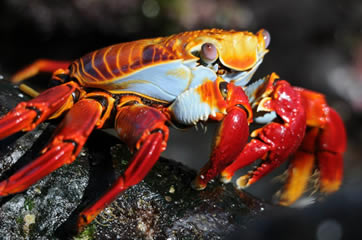 yellow-crowned night herons. Productive rock pools picked over by lava herons, American oystercatchers and other waders. Arid-zone vegetation supports Darwins Finches, Galapagos hawks and abundant Galapagos doves. Blue footed boobies and occasional Galapagos penguins roost on rocky point with good fish watching in the clear water. Playa Espumilla's lagoon is excellent for waders, many Galapagos sea lions and nesting green sea turltes at Buccaneer Cove. yellow-crowned night herons. Productive rock pools picked over by lava herons, American oystercatchers and other waders. Arid-zone vegetation supports Darwins Finches, Galapagos hawks and abundant Galapagos doves. Blue footed boobies and occasional Galapagos penguins roost on rocky point with good fish watching in the clear water. Playa Espumilla's lagoon is excellent for waders, many Galapagos sea lions and nesting green sea turltes at Buccaneer Cove.
Buccanner cove was an important site for the 17th and 18th century sailors, which included Darwin, whalers, and pirates, to reprovision with water, tortoises and firewood. The cove is home to Sea Lions and many marine birds. This can alsow be a great location for snorkeling.
Attractions: Sea birds, historical site, rock formations Activities: Snorkeling and walking along the dark red sand beach Landing: wet
Activities: PR = Panga Ride, SN = Snorkeling
Espumilla Beach is a visitor site is on the northern coast of Santiago Island in James Bay.The main attractions here are a palo santo forest, beach and the landscape. The beach is an important site for nesting marine turtles (Chelonia midas agassizi).
Attractions: Sea birds, Marine Iguanas, Sally Lightfood Crabs, Marine Life: Moray eels, octopi, and sharks Activities: Snorkeling and walking along the beach Landing: wet
Activities: PR = Panga Ride, HK = Hiking, possible SN = Snorkeling
Rocas Bainbridge is a small islet off the eastern side of Santiago Island. It is a collapsed volcano with a blue crater lake inside where the cone was. It is possible to see flamingos here. There is no landing, you will observe the island from the ship.
Attractions: Snorkeling Activities: Snorkeling & swimming
Landing: wet
Location: Central in archipelago, 85 km northwest of Puerto Ayora.
Facilities: None, wet landings at all sites.
Photo opportunities: Galapagos fur seals, waders marine iguanas, yellow-crowned night herons.
 
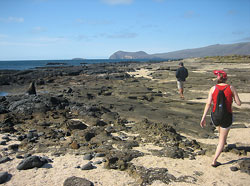 
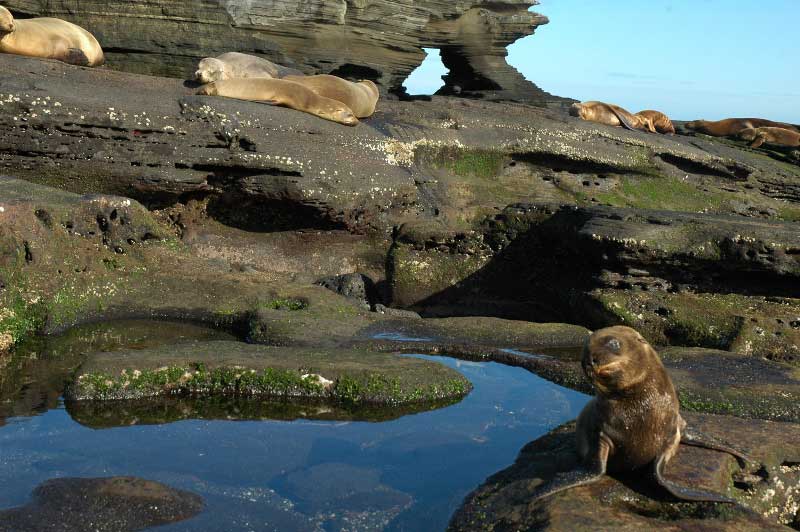 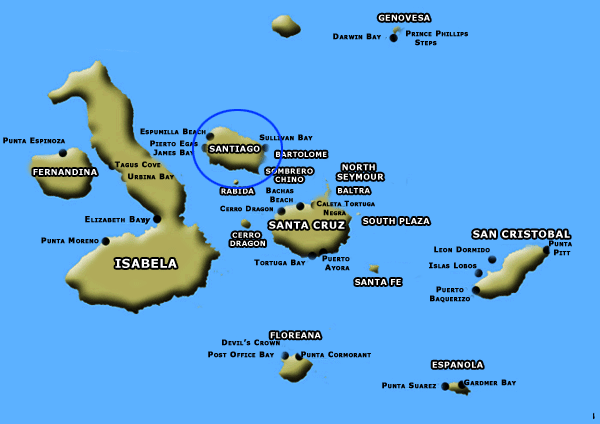 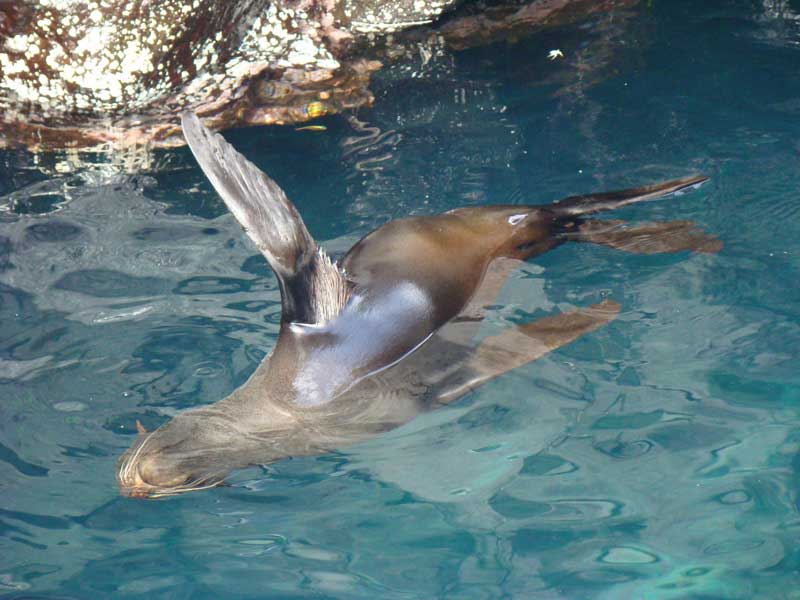
|